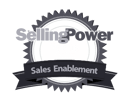
How to improve performance with a shared sales language
In the sales industry, we often talk about how process, methodology, technology, and enablement can improve performance.
But there’s something else much more fundamental to performance, that we rarely address directly: The language we use.
Here’s what I mean.
When your CEO asks for a YTD P&L, everyone on the finance team knows exactly what they mean. The CEO could request it from the CFO, the Director of Finance, or an accountant or bookkeeper on the team, and each one of those people would deliver exactly the same document with exactly the same contents.
That’s because the finance department has a shared language, and everyone on the team speaks it exactly the same way. Every element of that report is clearly defined according to a shared language: Cost of goods sold, cost of labor, accounts payable, accounts receivable. Each item has a standard industry definition, and also a shared definition within the organization.
You wouldn’t dream of doing business without establishing and maintaining that shared language in almost every department. Without it, you can’t operate efficiently and you can’t rely on the information and insights coming out of each department.
But there’s one department where we don’t require that level of linguistic rigor: Sales
Ask a salesperson to define an opportunity. Now ask a different salesperson. Now ask the sales manager. The Sales Director. The Chief Revenue Officer. You are likely to get five different answers.
Now ask each of those people to provide a sales pipeline forecast, and you will get five different forecasts. After all, how can your forecast be accurate, reliable, or consistent if nobody defines the contents of the pipeline in the same way?
For too long, our industry has operated by a different set of rules from the rest of the world. We’re allowed to flap around and do whatever we want as long as we bring in deals. Sometimes, especially at a small scale, this can work out okay–a superstar salesperson may pull a deal seemingly out of thin air to “save the day” when a forecast has gone awry.
But is this healthy? I don’t think so. In fact, it’s hurting the industry as a whole and each organization individually. In these times, when selling has grown more complex and our organizations have grown more and more global, it’s time to bring the same level of linguistic rigor to our industry as has long been applied in others.
What does a shared language look like?
Sales organizations with a shared language function more effectively, coach better and analyze more accurately. A shared language also enables better collaboration and coordination among departments and provides leadership with better information and insights for decision-making.
A shared language in sales starts at the leadership level, with the decision to clearly define the critical terms used within the organization. At a minimum, you should create clear definitions for frequently used process words like:
- Lead
- Prospect
- Qualification
- Opportunity (or Sales Project)
- Account Plan
- Win / Loss (or Archive)
- KPIs like win rate, deal size, sales cycle length
Once the terms are defined, they should be communicated clearly throughout the organization and the definitions reinforced. For instance, inside the CRM, if a salesperson wishes to move a contact from “prospect” to “opportunity,” they should be presented with a checklist to complete to validate that the prospect meets the correct criteria to accurately qualify as an “opportunity.”
When language is shared and reinforced across the organization, several things happen:
- Selling teams can more precisely discuss opportunities and pipelines, and better discuss their approach
- Coaches can better identify where each salesperson needs help, and provide it in a targeted manner
- The problem of pipeline bloat goes away because nobody’s moving deals through the pipeline inappropriately
- Leaders can rely on KPIs and forecasts and make data-based decisions based on accurate data
Very often, we think of sales as a numbers-driven profession, but the reality is that the numbers mean nothing without accurate language to describe what the numbers mean. At Membrain, we’re proud of how we help organizations define and reinforce definitions so that the numbers and analysis you rely on can actually be relied on.
I would love to show you why Membrain is the right tool for this. Contact us today.

By George Brontén
George is the founder & CEO of Membrain, the Sales Enablement CRM that makes it easy to execute your sales strategy. A life-long entrepreneur with 20 years of experience in the software space and a passion for sales and marketing. With the life motto "Don't settle for mainstream", he is always looking for new ways to achieve improved business results using innovative software, skills, and processes. George is also the author of the book Stop Killing Deals and the host of the Stop Killing Deals webinar and podcast series.
Find out more about George Brontén on LinkedIn







